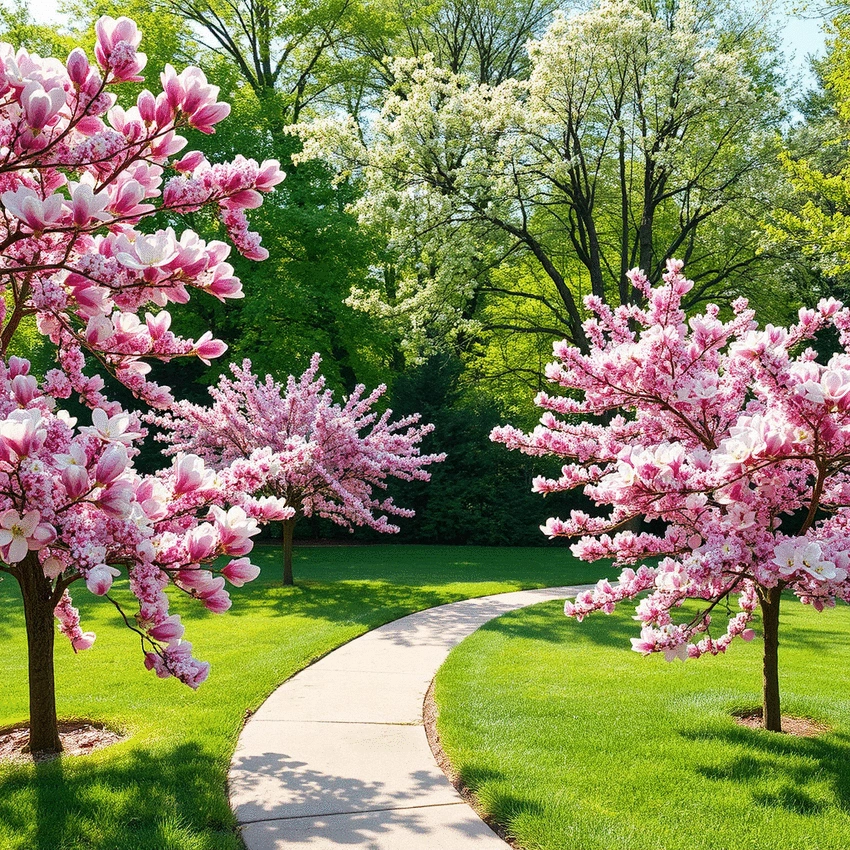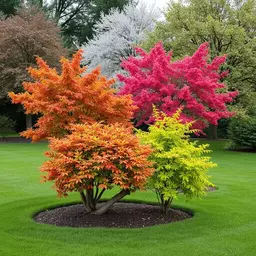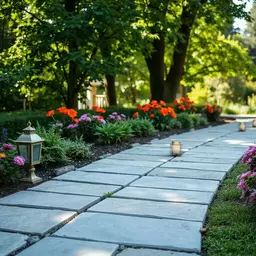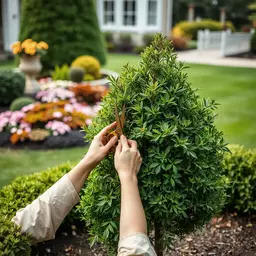Year-Round Trees for Your Landscape
By Celia Fairchild / Nov 02
Wondering how to elevate your outdoor space into a tranquil retreat? Incorporating flowering trees not only enhances the beauty of your backyard but also brings significant environmental benefits. With their vibrant colors and lovely scents, flowering trees can transform your garden into a stunning oasis while supporting local wildlife and improving air quality.
Flowering trees offer several key advantages that enhance both aesthetics and environmental health. Below are the primary benefits presented visually.
Bright colors and unique shapes contribute to visual interest.
Improved air quality and habitat for wildlife.
Enjoy different blooms and colors as the seasons change.
Have you ever considered how flowering trees can transform your backyard into a stunning retreat? These marvelous trees not only add visual appeal but also provide essential benefits for the environment. Incorporating flowering trees into your garden design can boost the aesthetic value while also supporting local wildlife and improving air quality. Imagine stepping outside to the vibrant colors and lovely fragrances of your blooming trees—it's like having a piece of nature's artwork right at your home!
Incorporating flowering trees into your landscape can create a serene atmosphere that welcomes nature's beauty. They provide shade, serve as windbreaks, and offer habitats for birds and beneficial insects. With the right selection and placement, flowering trees can elevate your garden's design, making it a perfect spot for relaxation or entertaining guests. For more insights on how to enhance your outdoor spaces, explore our guide on elegant landscaping with decorative trees.
Flowering trees play a vital role in enhancing the overall structure of your garden. They act as natural focal points and can guide the eye through your landscape. Additionally, their seasonal blooms create a dynamic display, ensuring your garden looks beautiful throughout the year.
Here are some key benefits of incorporating flowering trees into your backyard:
By selecting the right flowering trees, you can create a landscape that is both beautiful and functional. Consider how different species can complement each other in your garden. For instance, pairing trees with various bloom times and colors can create a harmonious and ever-changing display.
When it comes to selecting the perfect flowering trees for your backyard, there are several important factors to consider. Understanding your environment and the characteristics of each tree will help ensure successful growth and beauty for years to come.
Here are some key factors to keep in mind:
As you explore different flowering trees, think about how they will fit into your overall garden design. For example, if you have a small space, you might opt for smaller varieties or those that grow upward rather than outward. Remember, at Ornamental Yard, we’re here to guide you in making these important decisions to ensure your garden flourishes! You can also find valuable insights on choosing ornamental trees for landscapes that suit your specific needs.
Ready to discover some of the best flowering trees to enhance your backyard? Let's dive into a selection of stunning options that can elevate your landscape and create a gorgeous outdoor retreat!
Here's a brief recap of the key points discussed so far:
When you think about enhancing your backyard, have you considered how flowering trees can positively impact the environment? Not only do they bring beauty and charm, but they also play a significant role in improving our ecosystems. By integrating flowering trees into your landscape, you’ll not only enjoy their stunning blooms but also contribute to a healthier environment for yourself and local wildlife.
One major benefit of planting flowering trees is their ability to improve air quality. As these trees grow, they absorb carbon dioxide and release oxygen, making the air fresher and cleaner. Additionally, their blossoms provide essential habitats for various wildlife species, creating a thriving ecosystem right in your backyard.
Choosing native flowering trees is crucial for supporting local ecosystems and maintaining ecological balance. Native trees are well-adapted to the local climate and soil conditions, making them more resilient and easier to care for. By selecting these species, you create a landscape that benefits both you and the wildlife around you.
At Ornamental Yard, I’ve seen firsthand how incorporating native flowering trees can transform a garden into a vibrant ecosystem. The sight of birds flitting about and bees buzzing around the blooms adds life and energy to any space! For more information on maintaining the health of your trees, consider these essential tips for tree care.
Flowering trees play a vital role in attracting pollinators like bees and butterflies. These creatures are essential for pollinating many of the plants we rely on for food and beauty. By planting flowering trees, you're not only beautifying your backyard but also providing a critical resource for these important insects.
Creating a pollinator-friendly garden is a wonderful way to foster a connection with nature. Watching butterflies dance among the flowers is a magical experience that you won’t want to miss!
It’s a common concern for many homeowners to find suitable trees that can thrive in shaded spaces. Some excellent options include:
These trees not only flourish in less sunlight but also add aesthetic appeal to those shaded corners of your yard.
Selecting the right flowering tree for your climate is essential to ensure its long-term health and beauty. Here are some tips to consider:
At Ornamental Yard, I encourage homeowners to do a little research before planting. Finding the right tree makes all the difference in creating a flourishing garden! If your space is limited, you might find our guide on decorative trees for small gardens particularly helpful.
Maintenance for flowering trees varies by species, but general care includes regular watering, especially during dry spells, and occasional pruning to remove dead or diseased branches and maintain shape. Fertilization might be needed depending on soil quality. Always research the specific needs of your chosen tree species to ensure optimal growth and bloom.
The time it takes for flowering trees to bloom after planting can vary significantly. Some younger trees might bloom within the first year or two, while others, particularly those grown from seed or certain slower-growing varieties, may take several years to establish and produce their first flowers. Factors like species, age at planting, and growing conditions all play a role.
Like all plants, flowering trees can be susceptible to pests and diseases. However, choosing native species that are well-adapted to your local environment can significantly reduce these risks. Regular inspection, proper care, and maintaining tree health are key to preventing and managing potential issues. Early detection and treatment are also crucial for minimizing damage.
As you embark on your journey to incorporate flowering trees into your backyard, remember the importance of sustainability. Choose native species, consider pollinator needs, and maintain your trees naturally. Each small step contributes to a larger impact on the environment!
I’d love to hear about your experiences with flowering trees! Have you transformed your garden with these beautiful additions? Feel free to share your stories or photos with me at Ornamental Yard, and let’s inspire each other to create stunning outdoor spaces. Your garden can be a sanctuary for you and wildlife alike!
Here is a quick recap of the important points discussed in the article:

 Year-Round Trees for Your Landscape
Have you ever considered how the right trees can transform your garden into a year-round masterpiece
Year-Round Trees for Your Landscape
Have you ever considered how the right trees can transform your garden into a year-round masterpiece
 Creative Walkway Design Ideas
What if your walkway could do more than just lead the way? With the right design, it can enhance you
Creative Walkway Design Ideas
What if your walkway could do more than just lead the way? With the right design, it can enhance you
 Pruning Tips for Ornamental Shrubs
In the world of gardening, pruning isn't just a routine task; it’s an art that can greatly influen
Pruning Tips for Ornamental Shrubs
In the world of gardening, pruning isn't just a routine task; it’s an art that can greatly influen